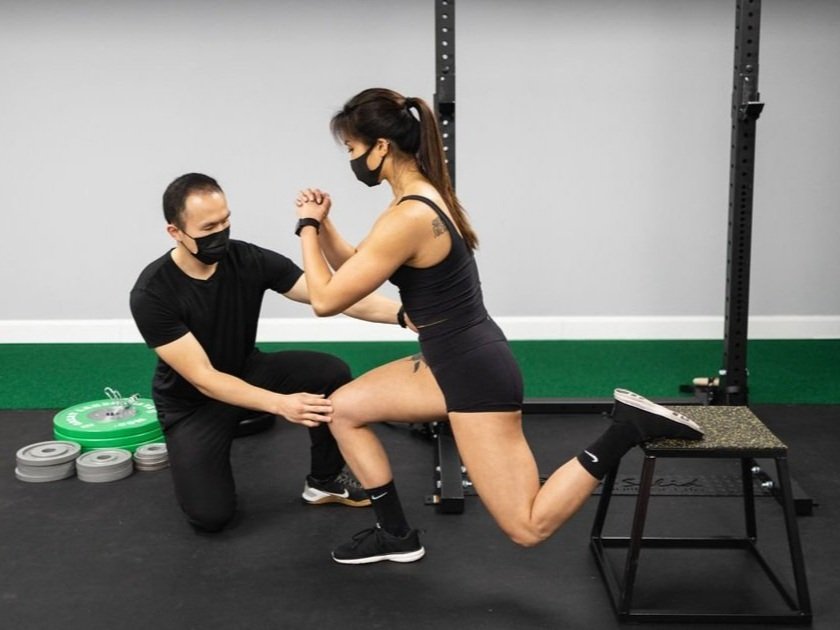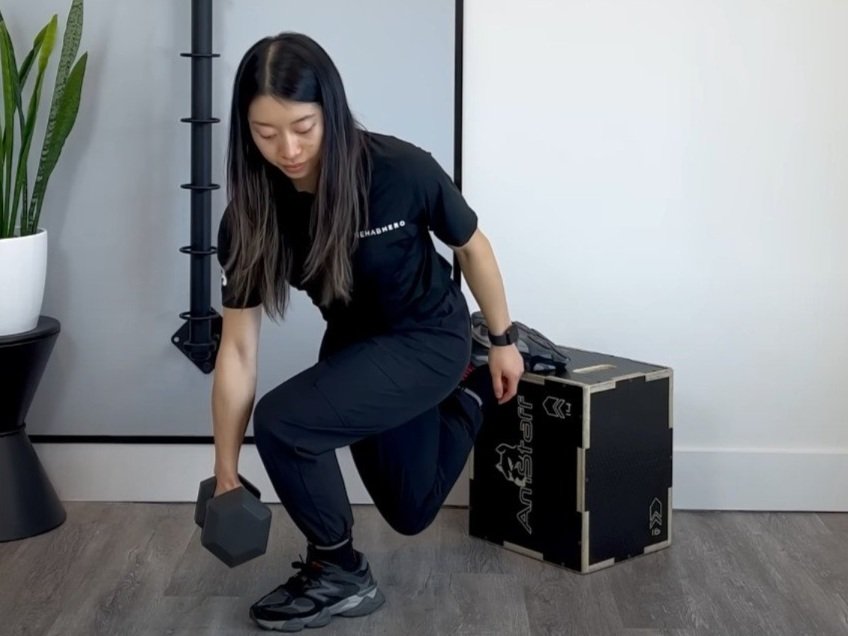Plyometric and Vertical Jump Training
What Are Plyometric Exercises?
This will be easier explained after providing a short definition of a few terms related to muscle actions.
Concentric movements refer to tension developing in the muscle while the muscle fibers shorten.
Eccentric movements refer to tension developing in the muscle while the muscle fibers are lengthening.
Isometric movements refer to tension developing in the muscle while there is no movement in the muscle.
Using the squat as a movement example, we will focus on the quadriceps muscles.
When you slowly lower into the squat in a controlled manner, the quads are working eccentrically (contracting, while slowly lengthening). If you hold the squat position and do not move, this is an isometric movement (no movement). When you stand up from the bottom of a squat, this is a concentric movement (the quads contract and shorten, straightening out the leg).
Try and apply this to other muscle groups to see if you understand the concept.
Plyometrics are exercises that involve a quick transition from an eccentric action to concentric action. Examples of plyometric exercises are continuous squat jumps, skipping rope and sprinting.
Who Should Be Performing These and Why?
Plyometrics should be performed by any person wanting to improve their athleticism in a given sport/activity as most sports involve athletes running, jumping forward, up and/or to the sides. The goal is to increase speed, power and quickness. These movements will also be performed on either one or two feet and in different planes.
Where Should You Start If You’re Interested In Vertical Jump Training? What Would It Look Like?
Strength training! Building a strong foundation is crucial to increasing longevity and reducing the risk of injury. This involves learning proper landing mechanics, resistance training, performing exercises that allow you to be more aware of the body, and increase lower limb stability. Jumping is a whole body exercise so your upper body shall not be neglected.
Why Is Strength So Important?
More forces go through the joints when landing from a jump simply due to the force of gravity. Depending on only technique is not enough for a safe landing. Strength is important to cushion the landing, transition from absorbing forces to also exploding off the floor to jump, once or repeatedly.
Plyometric exercises should be introduced slowly and progressed appropriately during the strength training phase. If incorporated too early at a high intensity, there is a chance of developing jumper’s knee/ patellar tendinopathy. We will be going over this in another blog post!
How Do You Start And How Can We Help?
If you have limited experience with training, have a history of injuries or need some guidance, get assessed from a Chiropractor or Physiotherapist Resident here at Rehab Hero for any imbalances/weaknesses you may be unaware of and tackle these along the journey. Having an assessment will help ensure an individualized, safe and effective program.
Lastly, you have to remember this is a process. Training will be tough, but remember to enjoy it and have fun!
LATEST BLOG ARTICLESRELATED EXERCISES





















